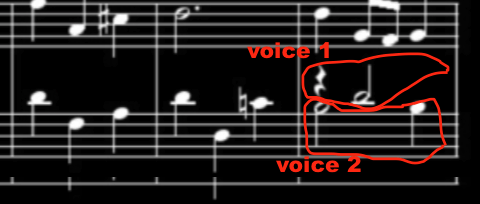If you look at the image below, you'll see that the 3 treble bars and the first two bass bars accord with 3/4 time, but the last bass bar to my mind does not. I also do not understand where the rest is supposed to be played when it is directly over a note, before that note or after it?
In order to calculate if a bar accords with 3/4 time then it follows that one beat equals one quarter note and there are to be three such beats in a bar. If two quarter notes equals the same amount time as a half note, then it follows that in the bass clef there are 6 beats, which is three too many. I still don't understand where the rest is supposed. Let's also break this down in terms of time. The tempo is set at 42 quarter notes per minute. 60/42 = 1.42. Hence two quarter notes should be played 1.42 seconds apart and two half notes at 2.84 seconds apart. Each bar then should last 4.26 seconds. The bar in the bass clef would last 8.52 seconds.
[![1]](https://i.sstatic.net/Tv5xk.png)

